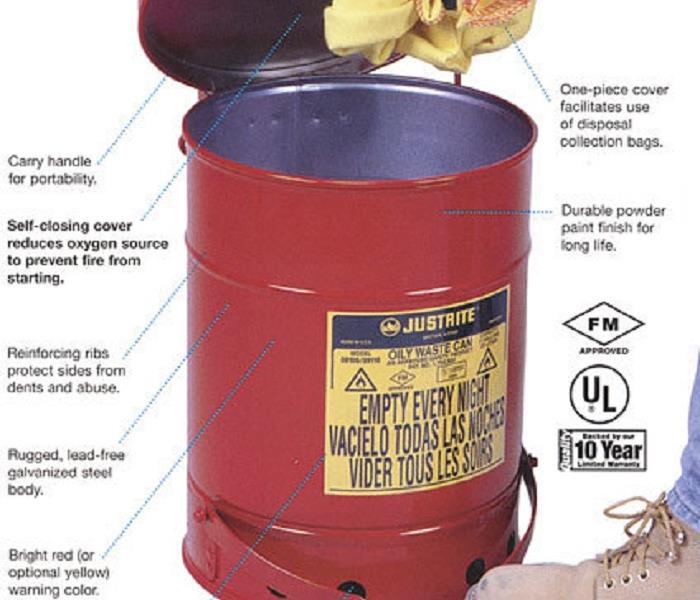Spontaneous Combustion
1/22/2021 (Permalink)
Winter weather outdoors provides for opportunities to perform indoor DIY projects. Renovation of kitchens and baths, change in flooring material, maybe even the addition of cove moldings. Most of these projects require the use of paints, varnishes and stains, of which this blog post is about.
So, what do you do with those used rags covered in oily residue? Place them in the trash? Store them in a bag for disposal? Leave them in a pile? If not disposed of properly, you may be doing more than renovations, you may be rebuilding after setting your house on fire from not storing or disposing of your used stain rags properly.
Oil-based stains are very common with woodworking projects. As oily rags begin to dry, heat is produced. If they're thrown into a pile, oxygen is trapped underneath. The combination of heat, oxygen and the cloth can lead to spontaneous combustion, which results in a fire that could destroy your home.
Don’t think this can happen to you? In Feb of 2020, a GC that was performing construction services for a local school, had a fire in the schools Receiving Area. They were using this area as a shop/storage area while performing their renovation services. The sub-contractor performing the painting/staining services was improperly storing his used stain rags. Fortunately for the GC, the sub-contractor was on site when the fire broke out. They were able to get the local fire department there quickly to extinguish the fire before much damage could be done.
However, the soot from the items that did get burnt penetrated a large area, including the kitchen, causing a substantial loss of food products as well as food prep and food service items. The clean-up needed to remove the soot and odor from the parts of the facility affected was substantial.
Noted below are some tips to help prevent this from happening to you:
- Keep your workspace clean and neat to prevent a fire from spreading and getting bigger.
- The preferred method of storage of oily soaked rags is within a metal container, with a lid, kept away from other potential fuel sources.
- Filling the storage container with water prevents oxidation from the oils.
- Contact your Municipality for proper disposal instructions of your oily rags.
Safety always comes first. Take a few minutes to read the labels of the products you’re using. Understand the safety instructions so that you are prepared to act in the event of an emergency. Read and follow the instructions on proper storage and disposal.

 24/7 Emergency Service
24/7 Emergency Service
